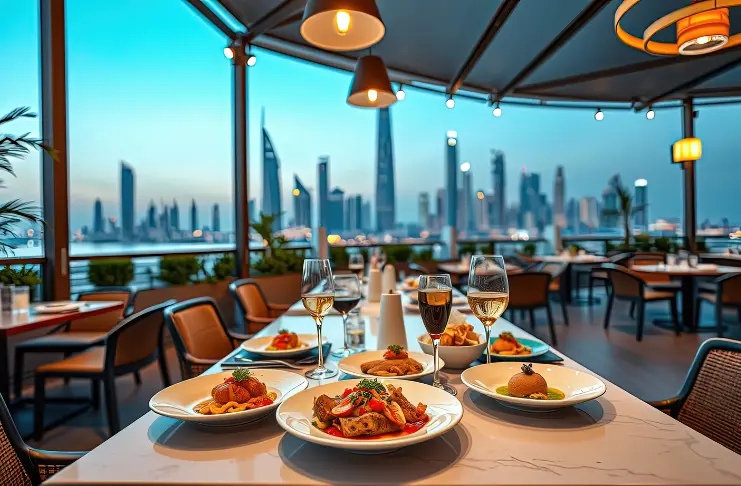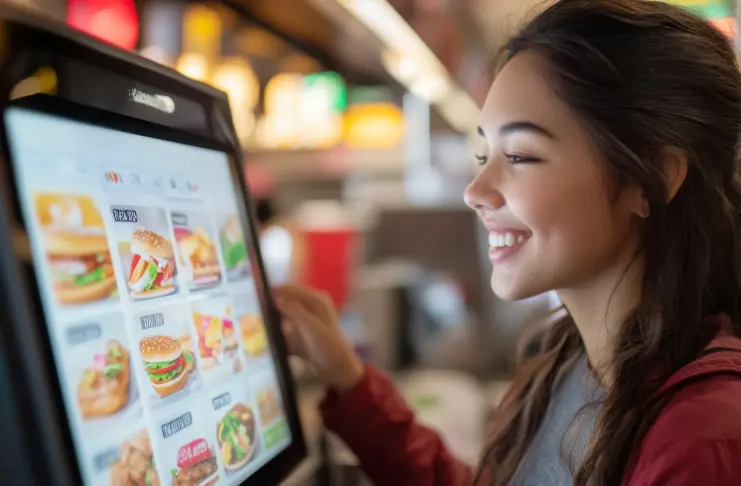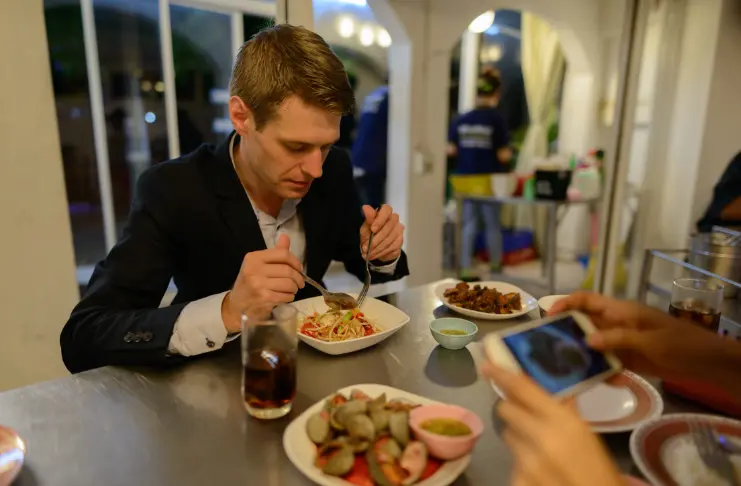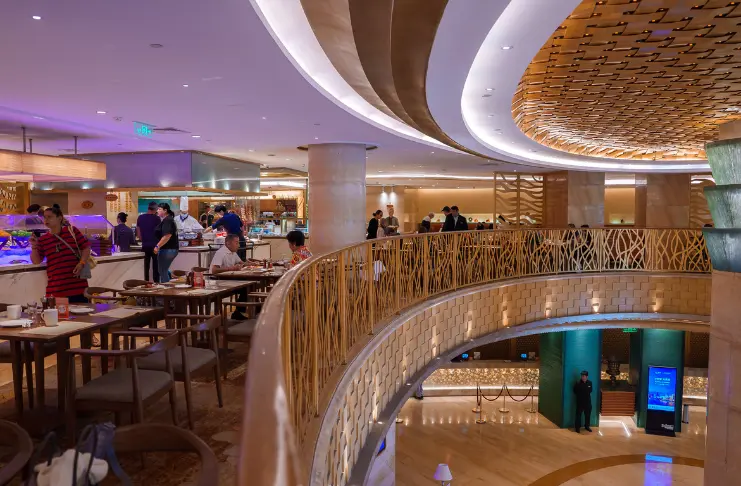
Dubai’s restaurant sector is evolving at an extraordinary pace, and it’s not just limited to luxury dining. With over 13,000 restaurants and cafes catering to one of the world’s most diverse populations, Dubai has become a key F&B growth market not just in the UAE but across the MENA region.
The emirate’s growing restaurant sector is backed by rising disposable incomes, a high concentration of expats, and government-led tourism initiatives that consistently bring millions of international visitors to the city annually.
Add to that a digital-first consumer base and widespread adoption of food delivery platforms, and you get a market that offers unlimited opportunities to scale and grow.
So, where does the Dubai restaurant industry stand currently? And how is it expected to grow? This blog delves deeper into the key Dubai restaurants statistics, offering restaurant operators, investors, and brands a clear-eyed view of Dubai’s foodservice landscape.
KEY INSIGHTS
1. Dubai ranks #2 globally as the gastronomy capital of the world in 2024. 2. Dubai was ranked ninth in Time Out’s 2024 list of The World’s 20 Best Cities for Food Right Now 3. The 2024 MENA edition of the World’s 50 Best Restaurants featured 18 Dubai restaurants. 4. The number of unique online searches for Dubai’s F&B sector crossed 740,000+ within the first seven months of 2024. 5. Indian cuisine accounted for 34% of all dining-related searches in Dubai. 6. 70% of UAE diners rely on social media to choose a restaurant. 7. 52% of UAE consumers dine out three times a week. 8. 48 restaurants in Dubai were awarded with ‘Toques’ in the Gault&Millau UAE Guide 2024 edition. 9. Dubai Food Festival 2024 featured 769 restaurants offering specially curated menus and diverse culinary experiences. |
Dubai Restaurants Statistics: An Overview
With a strong foundation already in place, understanding the structure of Dubai’s restaurant industry requires a closer look at the numbers.
This section breaks down key statistics on market size, format-specific growth, outlet density, and demographic reach, offering a comprehensive snapshot of the market in 2025.
A. Market Size
Dubai’s foodservice sector is a key component of the UAE’s broader F&B economy, which is projected to reach $52.76 billion by 2030, up from $23.21 billion in 2025, at an impressive CAGR of 17.84%. A strong tourism sector is a key driver of this growth, as Dubai attracted over 14 million tourists in 2022 and offered ample opportunities to owners across restaurant formats.
This growth is further accelerated by a massive expatriate community, which has a culture of multi-cuisine and authentic dining across the industry.
B. Segment-Wise Growth
The growth of the restaurant sector in Dubai isn’t concentrated in a single format or segment. Instead, it’s spread across key dining segments:
1. Full-Service Restaurants
Full-service restaurants are expected to surge from $9.92 billion in 2025 to $23.5 billion by 2030, supported by a CAGR of 18.8%. This reflects expanding dine-in demand, experiential venues, and tourist spending.
2. Quick-Service Restaurants
Quick-service restaurants (QSRs) are projected to climb from $5.25 billion in 2024 to $25.36 billion by 2033, a CAGR of roughly 19.2%. This underscores a strong appetite for affordable, fast meals, especially among tourists, who may prefer the convenience it offers, or those unfamiliar with the local cuisine.
3. Cloud Kitchens
While currently, cloud kitchens hold only 1.05% of the total foodservice establishments in the UAE, they are seeing increasing traction. With an estimated CAGR of 5.8%, the segment is expected to grow steadily due to low overheads and rising demand for online delivery.
4. Cafes and Bars
Cafes and bars dominate the foodservice market in the UAE, with over 3200 coffee shops and 2600 cafeterias in Dubai alone in 2022. This number is expected to grow further, at a rate of 6.72% during 2025-2030.
Within this segment, major coffee chains are targeting Dubai consumers with specialized coffees and customized services to meet their demand for modern spaces and experiences.

C. Restaurant Outlet Density in Dubai
The UAE is home to over 30,000 food outlets, and Dubai alone accounts for an estimated 60% of that total, making it one of the most densely saturated foodservice cities in the region. More than 13,000 cafes and restaurants within the city serve approximately 3.8 million residents, showcasing a vibrant and dense F&B ecosystem.
High outlet density means the market is competitive, but the scale of opportunity is strong. Operators can unlock growth opportunities by catering to niche audiences, optimizing experiences, and investing in operational efficiency.
D. Population Diversity
In Dubai, almost 80% of the population consists of expatriates. This globally diverse and urban-centric population is influencing the dining habits and operations, fueling interest in international cuisines, convenience formats, and digital-first ordering experiences.
Below is a breakdown of the diverse population impacting the Dubai restaurant industry-
- With a high expat population from countries such as Syria, Lebanon, Egypt, and Iran, Middle Eastern cuisine made up for a major share (43%) of full-service restaurants in the UAE in 2022.
- Asian cuisine has the second largest market share within full-service restaurants at 29.58%, driven by high Asian expat population residing.
- As of 2022, Indians are the largest Asian community in Dubai at 36.1%, followed by Bangladeshis (9.1%), Pakistanis (8.8%), Filipinos (5.9%), and Sri Lankans (3.08%).
- The rise of Mexican restaurants in urban areas across UAE, Latin American cuisine is growing significantly, at a CAGR of 10.79% by 2030.
Factors Driving the Dubai Restaurant Industry
Here’s a closer look at the six pivotal factors shaping Dubai’s restaurant market landscape and what it means for operators.
1. High Tourism Growth
Dubai set a new record for tourism with 18.72 million international overnight visitors in 2024, representing a 9% increase over the previous year. This surge in tourism flow means restaurants—especially those in malls, airports, hotels, and tourist districts—have a consistent stream of potential customers, seeking high-quality dining experiences.
At the same time, tourist diversity also encourages the growth of varied restaurant formats from fine dining to fast casuals, and operators offer multi-cuisine menus, multilingual service, and flexible pricing to cater to the unique needs.
2. Cultural Diversity
Dubai’s growth in the restaurant sector is deeply connected to its unique population and cultural dynamics. Given that a massive chunk of the population consists of expatriates, Dubai is one of the most internationally composed cities in the world.
This has created a multicultural dining ecosystem within the industry, leading to the growth of both international restaurant chains and authentic places that cater to diverse palates.
3. Digital-First Consumer
Online food delivery in the UAE is now a massive market, valued at $720.7 million in 2024 and expected to reach $1.8 billion by 2033, growing at a CAGR of 10.2%. Consumers are regularly ordering from restaurant apps and third-party food delivery platforms for the convenience and seamless experience they offer.
Consequently, this has changed how restaurants operate. Many now focus on optimizing for delivery with technology adoption, special packaging, app-only deals, and dedicated kitchen setups for takeout orders.
For operators, getting delivery right is essential to grow their reach and revenue without opening more physical locations.

4. New Dining Concepts and Operational Models
One major result of this delivery-first mindset has been the rise of cloud kitchens, which are delivery-only food businesses without dine-in areas. In Dubai, cloud kitchens are expanding fast because they cost less to run and allow brands to launch quickly or test new ideas without big investments.
For example, a restaurant could launch a Mexican-BBQ fusion concept exclusively through delivery apps and use customer feedback to decide whether to scale or pivot.
This flexible model helps both startups and larger restaurant groups reduce risk, experiment more often, and serve a wider audience accessible through restaurant apps.
5. UAE’s Mall Culture
Interestingly, UAE’s robust mall culture is one of the biggest factors shaping Dubai’s restaurant sector. As of 2022, Dubai features over 65 malls, while Abu Dhabi hosts about 15 malls, making them a hotspot for tourist and local guests.
With cinemas, indoor attractions, luxury retail, and regular events, malls drive massive foot traffic, which also makes them a central dining destination for premium and diverse food experiences.
Dubai Customer Trends and Preferences
Consumer expectations in Dubai’s restaurant scene are driven by technology, convenience, cultural diversity, and rising health consciousness.
From mobile-first ordering habits to a growing appetite for plant-based menus and international cuisines, here’s what the UAE and Dubai customer trends look like-
- UAE’s food service sector recorded $11.1 billion in sales in 2022, with cafés and bars leading growth.
- 52% of UAE consumers order food at least once a week, showing a strong habit of using delivery platforms.
- Plant-based diets are growing at a CAGR of 8.6% through 2025, driven by preferences for healthy eating and sustainable ingredients.
- A KPMG study reveals that 61% of UAE consumers have turned more health-conscious and driven towards organic food after the pandemic.
- Dining is one of the most preferred activities for Dubai residents, with the average consumer visiting restaurants 2.5 times in a week.
- Casual and family dining is growing, with 84% of consumers visiting these establishments between May and October 2024.
- When choosing restaurants to dine at, 49% of people in Dubai consider the type of cuisine it offers.
- One-third of UAE consumers plan to increase spending on dining out versus only 19% globally.
- Among Gen Z and Millennials in the UAE, 64% plan to reduce frequent casual dining, while 44% will spend more on premium dining experiences.

Restaurant Brand Presence in Dubai
Dubai’s restaurant ecosystem features a mix of established global chains and ambitious homegrown brands, each influencing the city’s dynamic food culture in unique ways.
International franchises continue to thrive to cater to a wider, international tourist base, while regional chains are scaling up with tech-driven formats and fusion menus to offer unique dining experiences to consumers.
A. International Chains
Global giants maintain a strong foothold in the UAE market, particularly in quick service formats. According to recent data, McDonald’s operates 162 outlets across the UAE, with about 60 in Dubai alone. KFC runs approximately 30 outlets, and Burger King has around 80 locations, often found in malls, tourist areas, and high-traffic zones.
These brands leverage trusted menus and consistent experiences to capitalize on Dubai’s cosmopolitan population, fast-paced lifestyle, and high tourism footfall. They also benefit from strong digital ordering infrastructure and partnerships with leading delivery aggregators, making them highly accessible to both locals and tourists.
B. Regional Chains
Dubai’s own brands are rapidly scaling both within the UAE and across the GCC. Pickl, a Dubai-born burger chain launched in April 2019, is an excellent example of rapid scaling.
As of September 2023, the brand expanded to at least 14 UAE outlets, with 1 in Bahrain, 4 in Egypt, and 1 in Qatar. Now under Yolk Brands, Pickl is aiming for 500 global outlets in the next five years in markets like Australia, Hong Kong, and Singapore.
They emphasize premium ingredients that are free from preservatives, positioning themselves between QSR efficiency and gourmet quality.
Other regional brands that are gaining momentum include-
- SALT: Founded by Amal Al Marri and Deem Albassam, SALT is known for its beachside pop-ups and Emirati cultural branding. It began with a food truck on Kite Beach in 2014 and has since expanded into multi-outlet pop-ups and beach restaurants across the UAE and GCC.
- Allo Beirut: Allo Beirut blends traditional Lebanese street food with fast-casual convenience. It operates seven outlets in Dubai, 2 in Abu Dhabi, and 1 in Ras Al Khaimah, offering authentic Lebanese street food 24/7 with diverse, nostalgic flavors.
- Operation: Falafel: Operation: Falafel is a home-grown street food brand that has scaled across multiple GCC cities and even expanded into London and New York. It launched in Manhattan, NYC, in 2021, exceeding revenue targets by 40% in the first week.
These brands cater to a younger demographic that values cultural authenticity, digital convenience, and premium casual dining. Their regional and global expansion highlights how Dubai is becoming a launchpad for scalable, culturally grounded restaurant ventures.
Regulatory & Operational Landscape of Dubai Restaurant Industry

Dubai’s restaurant industry operates within a strict but supportive regulatory framework that directly impacts compliance, cost, staffing, and sustainability. Here’s a detailed breakdown of the key factors shaping this environment-
1. Licensing and Compliance
In 2021, the UAE’s HRI (Hotel, Restaurant & Institutional) foodservice sector reached $12.3 billion, showing nearly 17% year-over-year growth. A critical aspect of this expansion is the stringent licensing requirements and regulatory compliance enforced by entities like Dubai Municipality and the Ministry of Industry and Advanced Technology.
Every F&B outlet must obtain a trade license from the Department of Economic Development and a food license from Dubai Municipality. The process includes detailed inspections of food safety, storage, HACCP protocols, and handling of non-Halal items like pork, with violations leading to hefty fines or shutdowns.
Additionally, the UAE enforces comprehensive Halal standards, including the Halal National Mark Certification. These regulations cover all stages of the food supply chain, from sourcing and slaughter to packaging and cross-contamination safeguards.
Such a rigid licensing structure ensures high operational quality and food safety, but adds complexity and upfront costs that operators must navigate before opening and scaling outlets.
2. Cost Pressures and Staffing
Restaurant operators in Dubai face rising rental and labor costs, driven by strong demand for commercial real estate and increasing living expenses. Dubai’s rental market saw a 10% increase in rents in the first half of 2024, which directly affects lease and operating costs for restaurants in malls, retail districts, and neighborhoods.
Labor-wise, the sector relies heavily on expatriate workers, with the UAE employing over 90% foreign labor. However, living costs are rising, as 70% of employees reported salary stagnation as rents increase, with many considering job changes. This creates challenges in turnover, recruitment costs, and wage pressures for restaurant operators.
3. Government Support
Dubai’s government supports the F&B sector through several long-term policies. The Dubai Economic Agenda D33 focuses on tourism and business infrastructure, while visa reforms aimed at investors and skilled talent are improving entrepreneur access.
At the same time, environmental focus is growing with initiatives like local sourcing, food waste reduction, and eco-packaging programs. Frameworks like the UAE Food Innovation Hub and Abu Dhabi’s Food & Beverage Sustainability Guidelines promote circular practices for even small F&B operators.
Together, these sustainability moves reduce dependency on imports (over 85% of food is imported), reduce cost volatility for restaurants, and support eco-conscious consumers.
4. Digital Integration
Technology plays a pivotal role in shaping the operational efficiency of Dubai’s restaurant sector. From order processing and customer engagement to back-of-house automation, operators are increasingly investing in digital tools to remain competitive in this fast-paced market.
With user penetration in the food delivery market expected to reach 31.4% in 2025, it is pushing restaurants to implement mobile apps and integrate with third-party aggregators to cater to a wider, convenience-driven audience.
Operational tech is also transforming in-store and kitchen workflows. Adoption of digital tools like smart POS systems, kitchen display systems (KDS), and inventory management platforms is rising. In fact, the UAE POS terminal market is expected to grow at a CAGR of 6.5% through 2028, signaling increased digitization at the operational level.
Conclusion
The statistical landscape of Dubai’s restaurant sector paints a picture of rapid growth and evolving consumer expectations. For restaurant operators, investors, and technology providers, these statistics act as tools for better decision-making.
They highlight where demand is rising, which formats are gaining traction, and how customer preferences are evolving. They also reveal the market’s readiness for innovation, digital infrastructure, and expansion.
In a city where food service plays a major role in tourism, lifestyle, and daily convenience, understanding the restaurant in Dubai statistics is essential for building a business that can adapt and grow.
Frequently Asked Questions
Dubai is home to over 13,000 restaurants and cafés, accounting for more than 60% of the UAE’s total food outlets. This high density reflects both local demand and Dubai’s position as a global culinary hub catering to residents, tourists, and a highly diverse population.
Restaurants in Dubai can be profitable, especially in high-traffic areas or with strong delivery models, where profitability depends on location, cuisine, licensing, and operational efficiency.
Sublimotion Dubai, located at Mandarin Oriental Jumeira, is among the most expensive dining experiences in the city. It is known for its immersive 12-seat multi-sensory dining experience, featuring a $2,000+ per person tasting menu.
Yes, Dubai has a very high restaurant-to-population ratio, with over 13,000 restaurants serving approximately 3.6 million residents. The city’s food scene is diverse and competitive, with a mix of global chains, local brands, cloud kitchens, and luxury fine dining outlets.
Profitability in Dubai’s restaurant industry can vary by format, location, and operational efficiency. Depending on the location, costs, pricing, and operations of the restaurant, profit margins can fall between 15%-20%.








